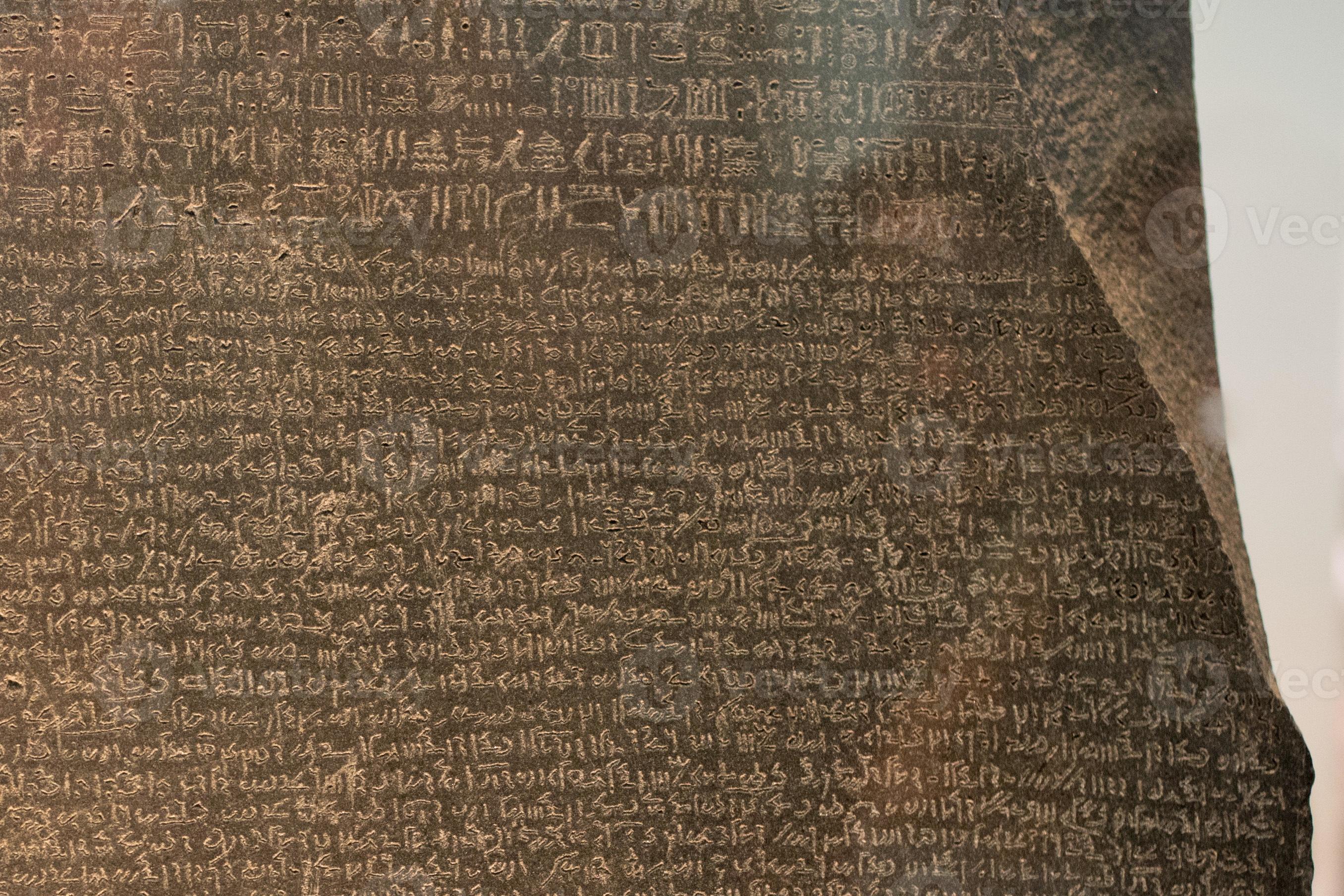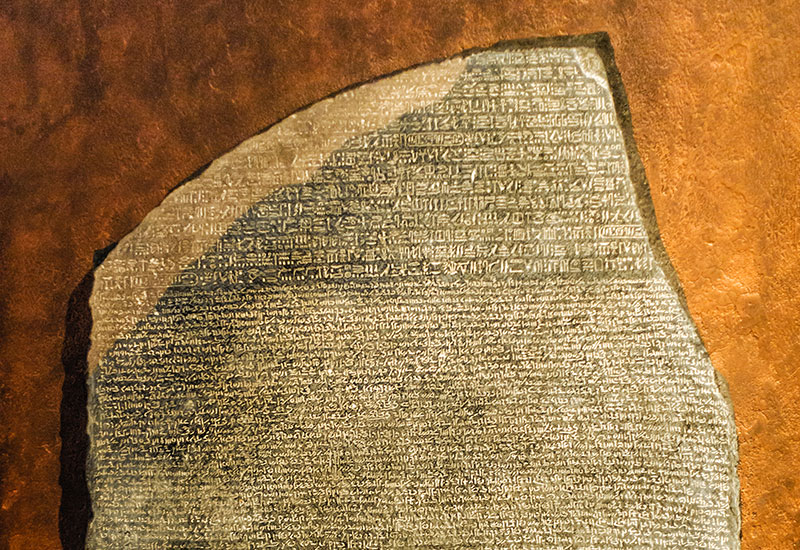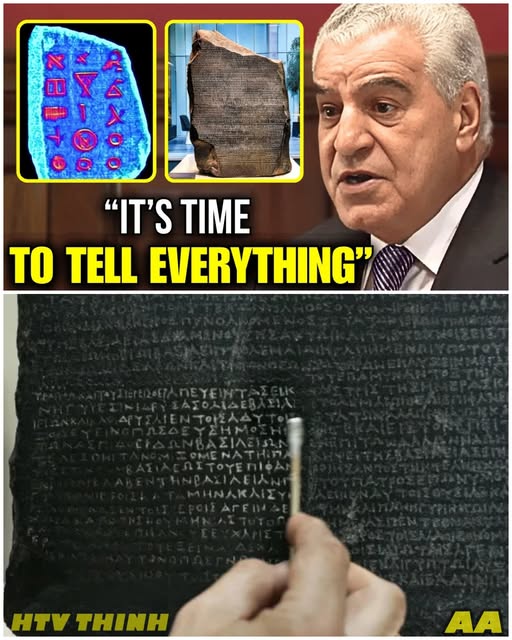Zahi Hawass Unveils the Hidden Truth Behind the Rosetta Stone: What He Discovered Will Change History Forever!

The saga of the Rosetta Stone begins not in the hallowed halls of a museum, but on a battlefield in the summer of 1799.
Napoleon Bonaparte, amid his ambitious campaign in Egypt, had brought along a cadre of engineers, scholars, and artists to document the wonders of the ancient land.
It was during this expedition that a French soldier stumbled upon a black slab of stone in the small Nile Delta town of Rosetta, now known as Rashid.
This seemingly ordinary find would soon emerge as one of the most pivotal artifacts in human history.
At nearly four feet tall, the Rosetta Stone bore inscriptions in three distinct scripts: the sacred hieroglyphs of the pharaohs, the more practical Demotic script used in daily affairs, and Greek, a language well
understood by scholars of the time.
The discovery was monumental; it was as if the ancients had left a built-in translation guide, enabling scholars to unlock the secrets of a civilization that had been silent for over a millennium.
The stone quickly became a symbol of hope for Egyptologists, who dreamed of deciphering the hieroglyphs that had long remained a closed book.
However, the political tides shifted dramatically when the British defeated Napoleon’s forces in Egypt.
The Rosetta Stone was seized as part of the terms of surrender and shipped to London in 1802, where it was installed in the British Museum.
From that moment on, the stone became a focal point of controversy.

Egyptians argued that it had been taken during a time of chaos and should never have left their homeland, while the British maintained that they had acquired it legally.
This debate continues to simmer beneath every discussion of the Rosetta Stone’s significance.
The implications of the stone were staggering.
For centuries, hieroglyphs had been a mystery, an enigma that scholars struggled to crack.
The Greek section of the Rosetta Stone provided a breakthrough, revealing that the three inscriptions conveyed the same decree issued in 196 BCE by priests in honor of the young king, Ptolemy V.
The decree praised the pharaoh for his generosity, detailing his reduction of taxes and support for temples.
To modern audiences, the content might seem mundane, but for scholars, it was revolutionary.
The Greek text served as a master key, unlocking the potential to decode the hieroglyphs and Demotic script, paving the way for a deeper understanding of ancient Egyptian civilization.
The early 1800s saw significant breakthroughs in deciphering the stone.
English scholar Thomas Young made the first important discovery, identifying that certain hieroglyphs were enclosed in oval shapes, or cartouches, which represented royal names.
This was a pivotal moment, demonstrating that hieroglyphs were not merely pictorial symbols but could also represent sounds.

French scholar Jean-François Champollion further advanced the field, recognizing that hieroglyphs contained both phonetic letters and symbolic elements.
By 1822, he announced that he had successfully deciphered the script, opening the door to reading thousands of inscriptions across Egypt.
The translation of the Rosetta Stone was less about the decree itself and more about the vast world of knowledge it unlocked, allowing the stories of gods, kings, and daily life to flow back into the modern
imagination.
Despite the clarity of the stone’s text, Zahi Hawass has emerged to challenge the prevailing narrative.
He argues that the accepted translation is not only incomplete but that it conceals deeper truths about the cultural and political context of ancient Egypt.
Hawass, a figure synonymous with modern Egyptian archaeology, has spent decades advocating for the return of Egypt’s most significant artifacts, including the Rosetta Stone itself.
He views the stone as a symbol of cultural sovereignty, a reminder that the narrative of Egypt’s past has often been told through a Western lens.
Hawass claims that the stone’s message goes beyond a simple royal decree.
He suggests that the translation has overlooked layers of meaning related to power dynamics, priestly authority, and national identity.
In his view, the decree encapsulates a coded message about who held true influence in Egypt during Ptolemy V’s reign—a perspective that he believes has been ignored by Western scholars.
He argues that the stone’s true significance lies in its ability to reflect the complexities of Egyptian society, particularly in the context of foreign rule.
While Hawass’s assertions have sparked significant debate, they have also drawn criticism for lacking rigorous academic backing.
To date, he has not published a comprehensive scholarly paper detailing his claims, relying instead on press conferences and public lectures to share his ideas.
Many Egyptologists have noted that no peer-reviewed evidence exists to support his assertions, and the consensus remains that the Rosetta Stone conveys an official decree honoring Ptolemy V and the priesthood.
However, the essence of Hawass’s argument resonates with a larger truth: all translations are interpretations influenced by cultural perspectives.

Scholars acknowledge that different readings of the same text can yield varying insights, depending on the reader’s background and expertise.
Hawass’s assertion that Egyptians are better positioned to interpret their own history highlights an important point about ownership of the past.
The Rosetta Stone is not just a relic; it embodies the struggles and triumphs of a civilization that has endured through the ages.
The politics surrounding the Rosetta Stone extend beyond its translation.
Its journey from discovery to display in the British Museum encapsulates the broader themes of colonialism and cultural heritage.
The stone, taken during a time of foreign domination, has become a point of contention in the ongoing debate over the repatriation of artifacts.
Hawass has been at the forefront of this movement, demanding the return of the stone to Egypt as a matter of justice and national pride.
The British Museum defends its possession of the stone, arguing that it was obtained legally through the Treaty of Alexandria in 1801, and that it serves as a universal artifact of world heritage, accessible to
millions of visitors.
However, as Egypt continues to assert its cultural identity, the absence of the Rosetta Stone in its homeland becomes increasingly difficult to accept.
Hawass’s campaign for its return has resonated with many Egyptians, who view the stone as a symbol of their heritage, a piece of their history that rightfully belongs in Cairo.
The implications of Hawass’s claims are profound.
If he is correct, the established narrative surrounding the Rosetta Stone would require a fundamental reevaluation, not only of its translation but also of the broader assumptions underpinning Egyptology.
The authority of Western scholarship, which has long dominated the field, could be challenged, allowing Egypt to reclaim its voice in the interpretation of its own history.
Conversely, if Hawass’s claims lack substantial evidence, it could undermine the credibility of future repatriation efforts and cast doubt on the motivations behind them.
Critics may argue that the push for the stone’s return is driven more by nationalism than by genuine scholarly inquiry.

The balance between science and showmanship that has characterized Hawass’s career could tip too far toward spectacle, potentially jeopardizing the integrity of his arguments.
Ultimately, the power of Hawass’s claims lies not solely in the potential for a new translation but in the reframing of the debate over the Rosetta Stone.
Even if the decree remains unchanged, the fact that it was inscribed in Egypt, for Egyptians, amplifies its significance.
Hawass’s insistence on a new interpretation forces the world to acknowledge that the story of the Rosetta Stone is incomplete without the Egyptian perspective.
In conclusion, the Rosetta Stone is far more than a slab of basalt inscribed with three scripts.
It is a battleground of meaning, a symbol of cultural pride and identity.
For Western scholars, it represents a triumph of linguistic achievement; for Egyptians, it embodies a stolen voice and a heritage that deserves to be reclaimed.
As the debate surrounding the stone continues, one thing remains clear: the quest for understanding the past is not just about deciphering ancient texts, but about recognizing the voices that have been silenced
throughout history.
If you found this exploration enlightening, please like and subscribe, and don’t forget to click on the next video for more captivating insights into our shared history!
